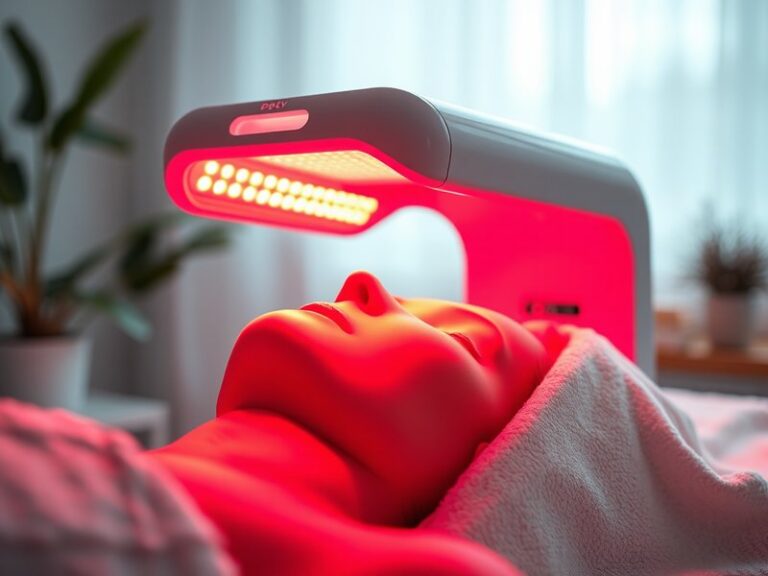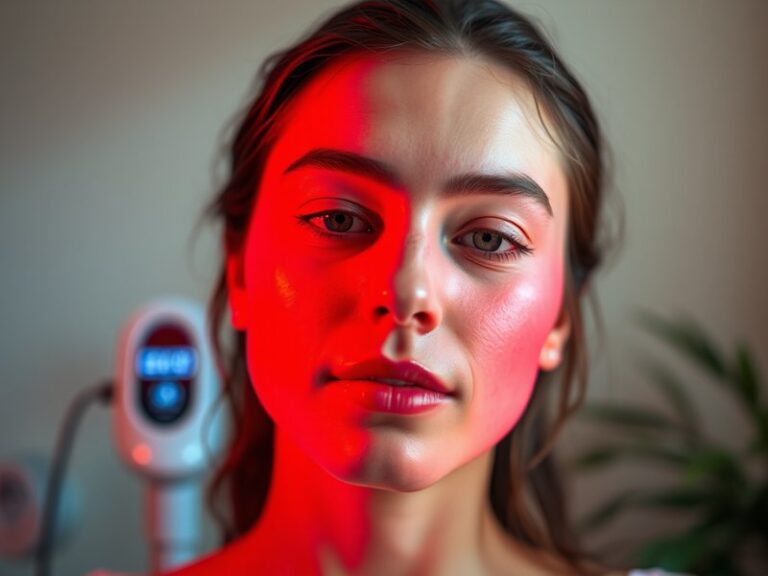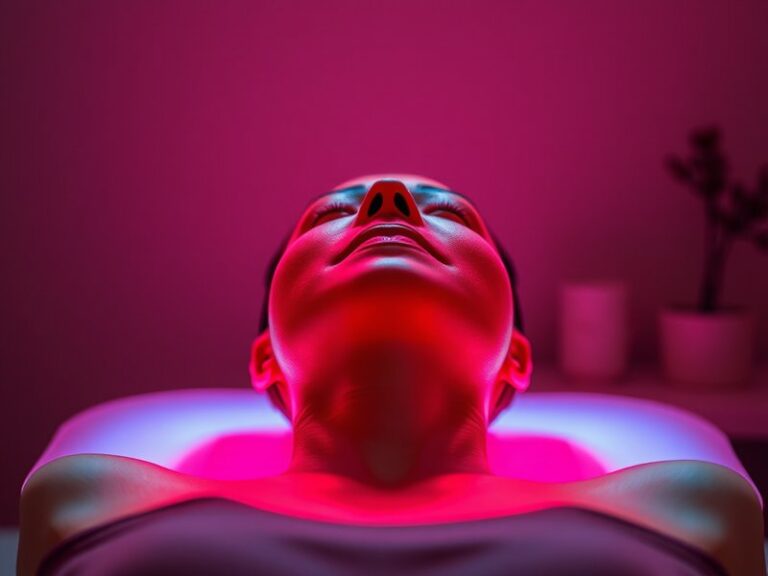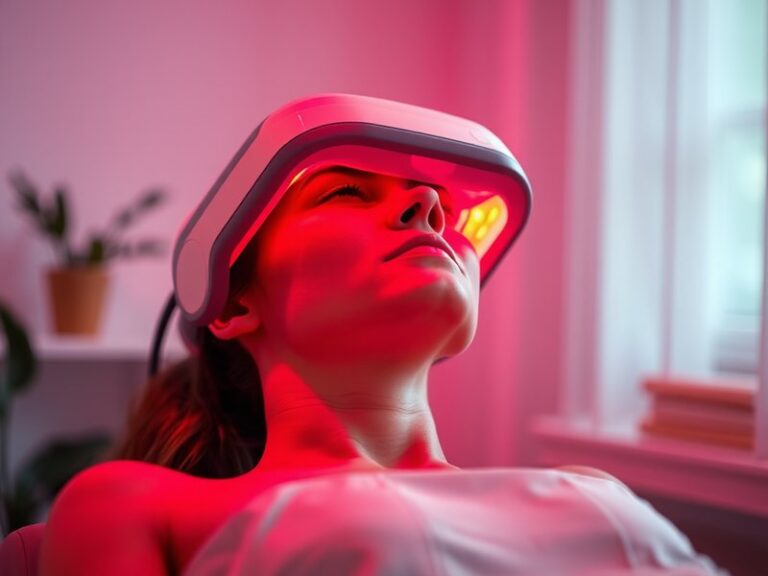Does Red Light Therapy Make Your Skin Worse?
Does Red Light Therapy Make Your Skin Worse?
Are you considering red light therapy but worried it might negatively impact your skin?
This article aims to explore the effects of red light therapy on the skin, addressing common concerns and misconceptions about its use. We will delve into the benefits, potential drawbacks, and important considerations to help you make an informed decision about whether this treatment is right for you.
Key Takeaways
- Red light therapy is generally considered safe for skin treatment and may improve various skin conditions.
- Some individuals may experience temporary discomfort or adverse reactions.
- Consulting with a professional before starting treatments can help maximize benefits and minimize risks.
What is Red Light Therapy?
Red light therapy (RLT) involves the use of low-level wavelengths of red light to promote healing and rejuvenation in the skin. This treatment is believed to penetrate the skin’s layers, stimulating cellular repair, increasing collagen production, and enhancing overall skin health. Originally developed for wound healing, its dermatological applications have grown significantly.
RLT can be conducted in professional settings, such as dermatology clinics or spas, and in home devices, providing flexibility for users. It’s essential to understand that different wavelengths and devices may lead to varying results, and not all red light therapy is created equal.
What are the Benefits of Red Light Therapy?
While concerns exist regarding RLT potentially worsening skin conditions, numerous benefits support its efficacy in enhancing skin health.
Get the full picture in Daily Red Light Therapy Safety?
Promotes Collagen Production
Collagen is a vital protein that maintains skin elasticity and reduces the appearance of wrinkles. Studies show that exposure to red light increases collagen synthesis, resulting in smoother, younger-looking skin.
Reduces Inflammation
RLT has anti-inflammatory properties, making it helpful for conditions like acne or rosacea. By reducing inflammation, red light therapy can alleviate redness and swelling, leading to a more even skin tone.
Improves Wound Healing
Red light therapy can accelerate the healing process for cuts, scars, and other skin injuries. Those with scars from acne or surgery may benefit from the enhanced healing effects, resulting in improved skin texture and appearance.
Enhances Skin Tone and Texture
Many users report an improvement in overall skin tone and texture after using red light therapy. By promoting better circulation and cellular health, the skin can appear more vibrant and less fatigued.
Is it Possible to Make Your Skin Worse with Red Light Therapy?
While red light therapy has many benefits, it is possible for some individuals to experience adverse effects. These might include temporary redness, irritation, or a burning sensation, similar to other skin treatments.
What are the Advantages of Red Light Therapy?
RLT carries numerous advantages, provided it is used correctly and under appropriate conditions.
Non-Invasive Treatment
Unlike more invasive procedures, red light therapy is non-surgical and requires no downtime. Patients can usually return to their daily activities immediately after treatment.
Customizable Treatment Plans
Sessions can often be customized based on the individual’s skin type and specific concerns, allowing for a tailored approach that may improve outcomes.
Minimal Side Effects
For most users, side effects are minimal and temporary. Unlike chemical peels or laser treatments, RLT has fewer risks associated with long-term skin deterioration.
What are the Disadvantages of Red Light Therapy?
Despite its benefits, there are some potential downsides to consider.
Check out our breakdown Does Red Light Therapy Work?
Not Suitable for Everyone
Individuals with certain skin conditions, such as photosensitivity, may need to avoid RLT. Consulting a healthcare provider is crucial for assessing compatibility.
Variable Results
Effectiveness can vary significantly from person to person. Some may experience visible improvements, while others might see little to no change.
Cost Considerations
Regular sessions, especially at professional clinics, can accumulate a substantial cost over time. Home devices may reduce this expense, but initial investments can still be high.
What are the Things to Consider Before Starting Red Light Therapy?
Considering all factors before beginning red light therapy is essential to ensure a positive experience.
Consultation with a Dermatologist
Before starting treatments, consult with a dermatologist who can assess your skin’s condition and recommend appropriate treatments tailored to your needs.
Understand Your Skin Type
Different skin types may react differently to red light therapy. Individuals with sensitive skin should be extra cautious and possibly opt for shorter sessions.
Follow the Recommended Protocol
Adhering to the recommended treatment frequency and duration is vital. Overusing RLT may lead to undesired results or skin irritation.
What are the Alternatives to Red Light Therapy?
If red light therapy doesn’t seem like the right fit, there are numerous alternatives to consider for skin health improvements.
Laser Treatments
Laser treatments target specific skin concerns, such as pigmentation issues or wrinkles, and can provide rapid results, but they may also involve downtime.
Chemical Peels
Chemical peels involve applying a solution to the skin, exfoliating its surface. This method can enhance skin texture but may require recovery time.
Microdermabrasion
This non-invasive treatment exfoliates the outer layer of dead skin cells, promoting new cell growth. It can lead to smoother skin with minimal side effects.
Conclusion: Is it Recommended to Use Red Light Therapy?
In summary, red light therapy offers several benefits for skin rejuvenation and health. While it rarely causes worsening of skin conditions, some individuals may experience mild side effects. Consulting a qualified professional and considering personal skin conditions will help ensure an effective and safe experience.
Frequently Asked Questions
Can red light therapy cause skin irritation?
Yes, some individuals may experience temporary redness or irritation after treatment. However, these effects typically resolve quickly.
How often should I undergo red light therapy?
Most providers recommend sessions 2-3 times per week for optimal results, but this can vary based on specific skin concerns and the device used.
Is red light therapy suitable for all skin types?
While many people can benefit from RLT, those with certain skin conditions should consult with a dermatologist before use.
How long does a typical red light therapy session last?
Sessions usually last between 10 to 30 minutes, depending on the device and treatment goals.
Are there any long-term risks associated with red light therapy?
Generally, red light therapy is considered safe with minimal long-term risks, but individual reactions can vary. Consulting with a professional is advised.






